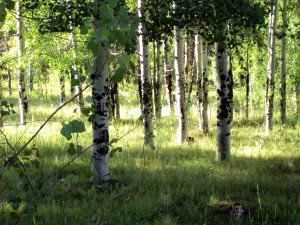
Stand of Quaking Aspens in the Jemez Mountains

Gyp Hills Skyline (near White Sands)
I am nearing the end of the internship now and have to say that I am very impressed with all I have learned about botany and about my own skills. I am now capable of making collections by myself in the field and identifying the plants successfully. Considering that I was not a botanist upon graduation, this is great. Even driving around in my home city, I recognize many species that I can recall the genus and species of with no problem. In addition, as I look back, I realize that a large part of the internship has involved extensive coordination of efforts and administrative tasks, and a lot of field work planning, and I have proven very capable of doing these things on my own in such a way where objectives get met and even exceeded.
I am also very impressed with the CLM internship program, as it has afforded me a fantastic opportunity for memorable field experiences in addition to the opportunity to put my skills to use and see what I can do for restoration. My career goals have come out the other side more defined, as I now know that I enjoy being in the field most and I am aware that the most enjoyable aspect of environmental science, for me, is environmental stewardship and even research therein.
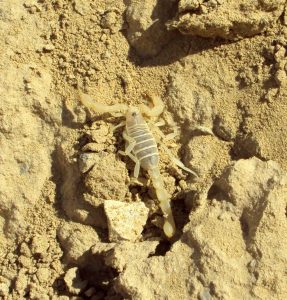
Small Scorpion
There were many interesting adventures in the field, and I’ve seen and collected on so many different landscapes, from canyons, to deserts, to Pinon-Juniper woodlands, and even Ponderosa Pine forests. One of the more interesting experiences involved collecting prickly pear fruit. I suggest thick gloves for that one.
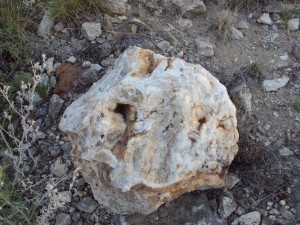
Huge geode near old mine
I’ve seen tarantulas, scorpions, owls, a rattlesnake, bats, and a wide assortment of insects and spiders. There is an abundance of fascinating yellow and black garden spiders in the grasslands and shrublands. We’ve collected wild raspberries, native grasses, a variety of different purple and yellow composites, thistles, lemonaide bush, globemallow, Apache plume, red bearberries, etc.
One of the coolest things about the internship is the sights you see while driving. The geology here in New Mexico is incredibly thought-provoking. I’ve passed by (and worked around, in some cases) volcanic fields, badlands, eolian sculptures, and travertine deposits. Some examples include the Mogollon-Datil volcanic field, the Angel Peak badlands, and Soda Dam near Jemez Springs. While it’s hard to believe New Mexico was once underwater, the evidence is everywhere, including in fossilized shells in several of the rocks I’ve found.
Since my last post, we have managed to meet our collection quota and then some. Conditions were just right for seed production and yield was great during the months of August and September, and continues to be great in October. For the past two and a half weeks I have been on my own in the internship and have been spending some time working with the other teams to see what SOS collection is like in other parts of New Mexico. I’ve found that in northern New Mexico, assemblages are very similar in some areas and hugely different in others, and that these differences seem most correlated with elevation. In those two and a half weeks, I have also managed five collections for the Los Lunas team.
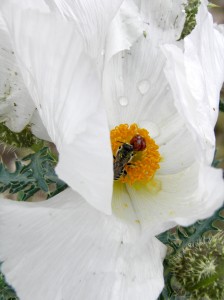
Argemone pleiacantha ssp. ambigua with a visitor
The rains have tapered off a bit here and so has the heat (although Walnut Canyon seems to always be boiling hot during the day). Tomorrow I will be returning to a patch of BLM land near the small but quaint Pie Town, New Mexico, to continue with some collections that I began the week before last. Maybe I will stop and get some pie during my lunch break.
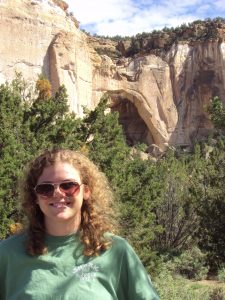
La Ventana Natural Arch and Dry Waterfall
Tessia Robbins
Los Lunas PMC, NM




















